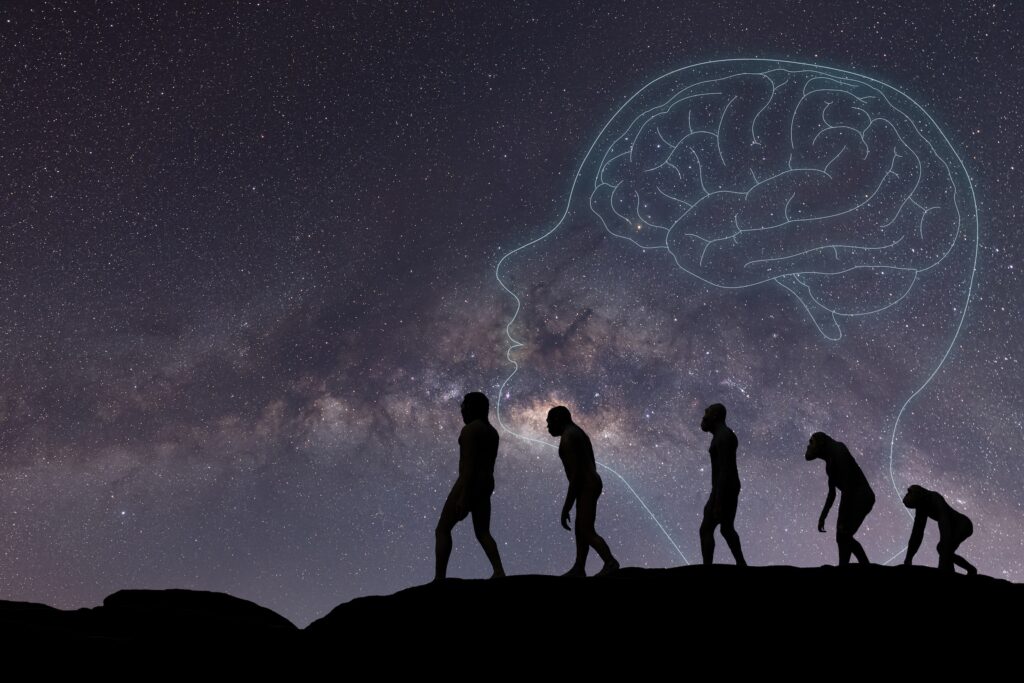Light or Darkness? Suhrawardī’s philosophy of illumination
Reading | Philosophy
![]() Natalia Vorontsova, MA | 2023-11-26
Natalia Vorontsova, MA | 2023-11-26

Is the conflict between good and evil—light and darkness—ultimately a false dichotomy? Could nature be best described as a hierarchy of illumination instead? This brief essay is an introduction to the illuminationist thought of Persian philosopher and theologian Suhrawardī. It will hopefully make you curious about the work of this great thinker, and motivate you to study his legacy further. The essay is a follow-up to last week’s theme: Islamic philosophy.
Perhaps no other metaphor in the history of philosophy and religion—not to mention our language and culture—is as widespread as that of light and darkness. People who like to say to each other: “Don’t turn to the dark side! May the Force be with you!” must have a special appreciation for this metaphor [1,2].
Darkness cannot drive out darkness: only light can do that.’ (Mahatma Gandhi)
In the midst of darkness, light persists.’ (Martin Luther King)
The metaphor is often associated with two polar opposites: good and evil, right and wrong. But if we turn to the Master of Illumination, Suhrawardī—a Persian philosopher and theologian who founded a new tradition in Islamic thought, that of Ishrāq (‘Illuminationism’)—then only Light is a fundamental reality.
According to Suhrawardī, all reality is Light, which no concept or proposition can adequately describe or convey. Only the experiencing of the reality of Light itself can reveal it. Whoever encounters it knows it immediately and directly, by presence and not by concepts, for it is axiomatic and self-evident.
Anything in existence that requires no definition or explanation is evident. Since there is nothing more evident than light, there is nothing less in need of definition [4].
What then is darkness? In the philosophical doctrine of Suhrawardī, it is the absence of Light: everything that is neither illuminated nor Light itself. Hence it is Light that is a basic reality, and everything must be defined in terms of it, expressed in varying degrees of intensity, ranging from pure immaterial light to darkness and shadow. In essence, the doctrine is a hierarchical and emanatory scheme based on two principles: light (independent ) and darkness (dependent). And every emanative act is an overflow from the Light above it as an act of luminescence whose reflective nature gives rise to another. Furthermore, no causal relation exists between emanative acts; there is no material or temporal precession. Here is a high-level outline of key emanations in Suhrawardī’s cosmology:
- Incorporeal (pure) Light: axiomatic, independent in and of itself.
- Light of Lights: the Necessary Being, the Source of Light, God.
- Immaterial Lights: Forms, Souls, Angels, Archangels and Platonic Archetypes.
- Accidental Light: Light inhering in another, such as the light of stars.
- Suspended Images: A special emanation that mediates between incorporeal and corporeal emanations, also known as Mundus Imaginalis. Autonomous images of the medium through which the incorporeal world of lights communicates and interacts with the corporeal world of shadow and darkness.
- Corporeal (pure) Darkness & Shadow: things whose nature is darkness in itself, an absence of Light, such as physical bodies (barriers, ‘dusky substances’).
- Accidental Darkness: depends on something other than itself, such as the shapes of physical objects. In also includes aspects of incorporeal lights that give rise to a corporeal
Similar to Avicenna’s concept of the incorporeal intelligences, the incorporeal lights are aware of their essence and their dependence on the emanating principle, namely the light above them in ontological rank. This establishes the relationship of dominion and love between all members of the hierarchy. Those of higher ontological rank exercise dominion over the lower members, while the lower members desire and love the lights above them. Thus, all existence unfolds in accordance with the underlying principles of love and dominion. In addition to this vertical hierarchy, the immaterial lights, through complex interactions, form a ‘horizontal’ layer to govern the multitude of emanations below them. These are the ‘masters of species,’ of minerals, plants and animals, but also of water, fire, earth and air [6].
For Suhrawardī, philosophy and mystical experience were inseparable. Thus, for him, the “pillars of wisdom” were Plato, Empedocles and Pythagoras, along with Zoroaster and the Prophet Mohammed [3,4,11]. His Philosophy of Illumination is thus deeply rooted in the metaphysical hierarchies of Neoplatonism, set in the context of Zoroastrianism and Shi’a Islam [5].
It is also important to bear in mind that Suhrawardī received his philosophical and theological insights as visions and revelations. In order to articulate them in a given language, pre-existing mental constructs are often used, even if they originally meant something different from what is being articulated. In Zoroastrianism, for example, the struggle of light against darkness is central and directly related to the forces of good and evil. In Islam, too, Allah is Light (nūr) and appears as light in the heavens and on earth [7].
Suhrawardī’s philosophical doctrine is certainly non-dual at its core, for here darkness has no independent existence and is merely the absence of light. But can his emanation cosmology be interpreted in the context of good versus evil? On the face of it, Suhrawardī is simply using an already conceptually available allegory of light and darkness to outline the creation by emanation from the omnipotent, omnipresent, omniscient incorporeal reality that contains all that there is, to that of our corporeal universe, which is finite, ephemeral, limited and constantly changing. Incidentally, one can appreciate Suhrawardī’s intermediate emanations between the level of Light of Lights and that of Pure Darkness. For the gap between these two levels of reality is so great that without all the intermediate layers, such a scheme could be compared to lighting a light bulb directly from the sun.
But can light and darkness, with all the shades in between, be understood simply as colors with which Suhrawardī paints a picture of his illuminationist philosophy? It would seem that by conceptualizing emanation as a gradation of illumination and shadow casting, he is outlining proximity and relationship to the Divine, rather than a scale of good and evil. Nevertheless, the degrees of intensity of light seem to allude to the degrees of perfection: the closer to the Light of Lights or the Divine, the more perfect are the emanations [8]. In the Hermetic tradition in general, we find references, for example, to man’s re-conquest of his Perfect Nature—his soul, the ‘Illuminated Man’ or the ‘Man of Light’ in Zoroastrianism. And Suhrawardī is no exception, for in his view those on the mystical path who succeed in regaining their Perfect Nature become the disciples of Hermes [9].
Suhrawardī’s own visions and intuitive insights undoubtedly influenced his illuminationist doctrine. In his most important work, the “Wisdom of Illumination” (Ḥikmat al-ishrāq), Suhrawardī presents a unique conception of philosophy that combines the intuitive mystical path with rigorous philosophical discourse:
The best student is the student of both intuitive philosophy and discursive philosophy. Next is the student of intuitive philosophy. And then the student of discursive philosophy [4].
Nonetheless, he seems to value intuitive, direct knowledge over mere reasoning and rational speculation, since only direct experience guarantees the acquisition of true knowledge [8].
Theorising and rational arguments are like empty shells and are fruitless without grounding in the intuitive and direct apprehension of reality. [6]
In other words, discursive philosophy should be based on intuitive, direct insights communicated in images and symbols.
…symbols by their very nature are openings onto a mystery that can never be wholly explained and can never be exhausted [10].
For Suhrawardī, a symbol is a way of communicating what cannot be expressed in words. It is a way of bypassing the rational intellect so to arrive at an intuitive insight. Meditation on images and symbols can lead the soul to connect with a higher ontological reality. The soul ‘inhabits’ both the immaterial world of lights and the sensory world of physical forms simultaneously. Thus, the soul incarnates to acquire wisdom, but also remains in the world of the immaterial lights as the perfect nature of the initiate, as a guardian angel. The soul is therefore the microcosmic counterpart of the Mundus Imaginalis or the world of Suspended Images, which mediates between the sensory and intelligible worlds. The Imaginal World is neither corporeal—with a spatiotemporal existence in the sensory world—nor purely incorporeal, but rather comparable to images suspended in a mirror.
The mirror is the locus in which the form in the mirror is made evident. The forms are suspended and are in neither a place nor a locus. The imaginative faculty is the locus in which the forms of the imagination are made evident and are suspended [6].
It is on the plane of the Mundus Imaginalis that visionary events take place, which are more real than those in the sensory world. For they are more ‘illuminated’ or energized by their proximity to the world of the Immaterial Lights. The Mundus Imaginalis is the world that the spiritual pilgrim encounters in his mystical experiences, the “land of visions” and the “land of resurrection”, where it is possible to be reunited with the soul, with Perfect Nature. And man has access to it by means of a special faculty of the soul, namely the active imagination [6,11].
Suhrawardī has gone down in history as the founder of an illuminationist philosophical tradition—an influential philosophy that has been studied extensively both in the Islamic East and later in the West. But it is remarkable how far and wide in human history we can find references to what he outlined in his emanatory cosmology: the Imaginal World (Mundus Imaginalis), Perfect Nature and Active Imagination. Here are just a few examples [8,10,11,12]:
- In the Zoroastrian tradition, Mundus Imaginalis is referred to as the “Land of the Emerald Cities” or the Eighth Region of the World.
- According to a Sufi tradition originating in Yemen, Khezr-Elijah—the name of Perfect Nature, the Angel of Knowledge, man’s most luminous nature—dwells where the celestial and terrestrial oceans touch.
- Paracelsus spoke of the faculty of imaginatio vera, true imagination, which he urged should not be confused with fantasy.
- Martin Ruland, in his Lexicon alchemiae (1612), stated that “Imagination is the star in man, the celestial or supercelestial body.”
- Jacob Boehme spoke of the Imaginal World in the guises of the “Holy Element” or the “Soul of the World,” where Sophia (wisdom) dwells.
- Carl Gustav Jung observed that the Magnum Opus of alchemy was as much a psychological operation, concerned with self-transformation, as the transmutation of metals. For him, true imagination was a fundamental key to understanding the Great Work. The in-between reality of the Imaginal World he called psychic.
And didn’t even Newton write in his alchemical texts that the real truths are embodied in myths, fables and prophecies [11]?
References
[1] https://dictionaryblog.cambridge.org/2020/06/17/from-darkness-into-the-light-metaphors-of-darkness-and-light/
[2] https://www.britannica.com/topic/Star-Wars-film-series
[3] https://plato.stanford.edu/entries/suhrawardi/
[4] Suhrawardi & The Philosophy of Illumination, https://www.youtube.com/watch?v=XbD8vfzsEHA&t=861s
[5] Cheetham, T., All the World An Icon: Henry Corbin and the Angelic Function of Beings, North Atlantic Books, 2012.
[6] Suhrawardi’s Science of Mystic Lights, https://www.youtube.com/watch?v=01qrFgEYhqI&t=190s
[7] Surah An-Nur Ayat 35 (24:35 Quran).
[8] https://plato.stanford.edu/Archives/Spr2013/entries/suhrawardi/
[9] Rebisse, Chr., Rosicrucian History and Mysteries, Athenaeum Press Ltd, 2007, pp. 110-111, 115.
[10] Cheetham, T., All the World An Icon: Henry Corbin and the Angelic Function of Beings, North Atlantic Books, 2012, p.68.
[11] Rebisse, Chr., Rosicrucian History and Mysteries, Athenaeum Press Ltd, 2007.
[12] Harpur, P., The Philosophers’ Secret Fire: a history of the imagination, The Squeeze Press 2009, p.123.

Essentia Foundation communicates, in an accessible but rigorous manner, the latest results in science and philosophy that point to the mental nature of reality. We are committed to strict, academic-level curation of the material we publish.
Recently published
Reading
Essays
Seeing
Videos
Let us build the future of our culture together
Essentia Foundation is a registered non-profit committed to making its content as accessible as possible. Therefore, we depend on contributions from people like you to continue to do our work. There are many ways to contribute.















